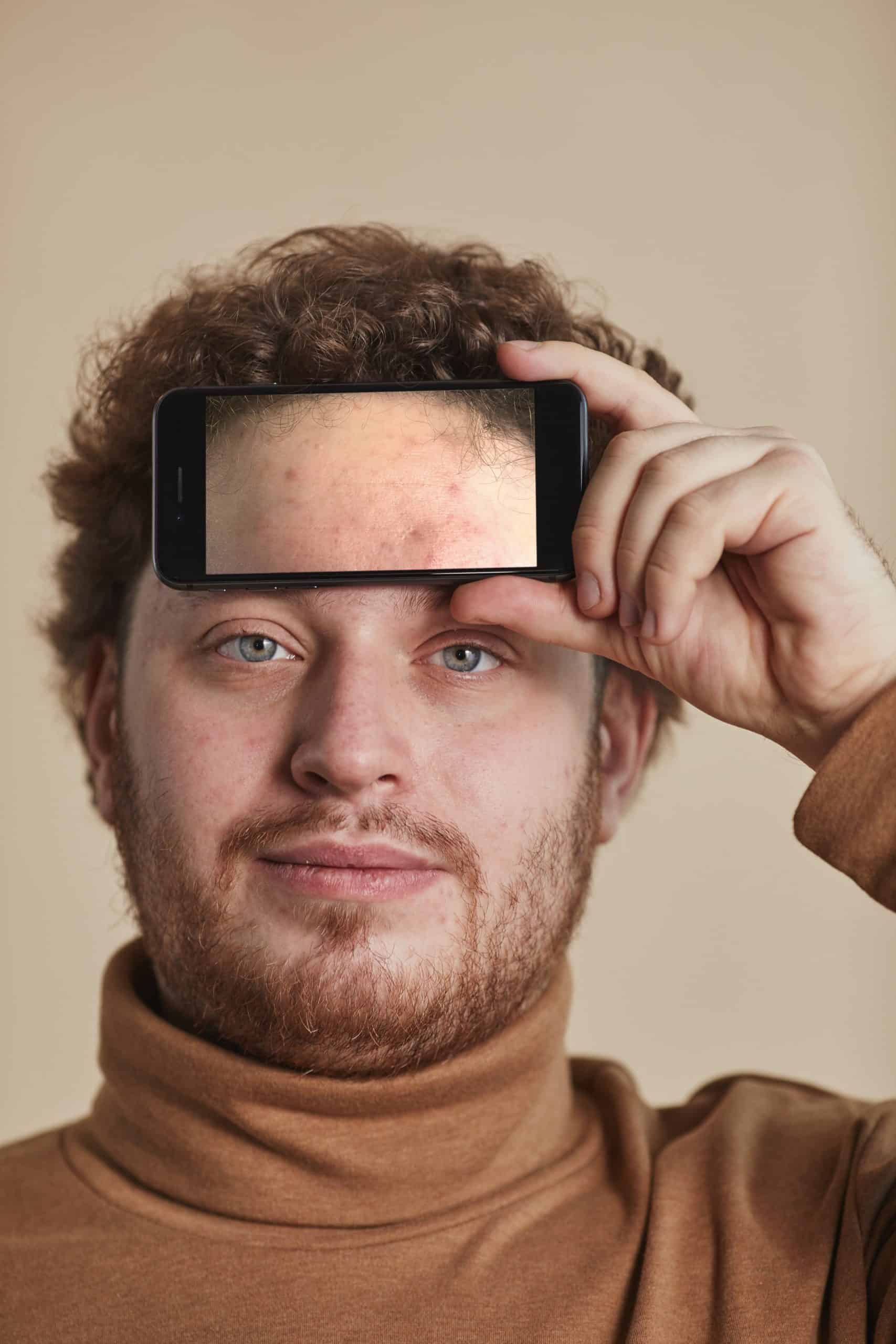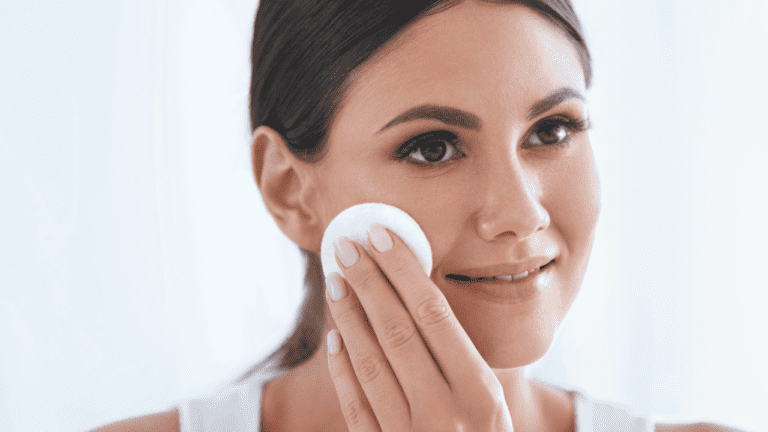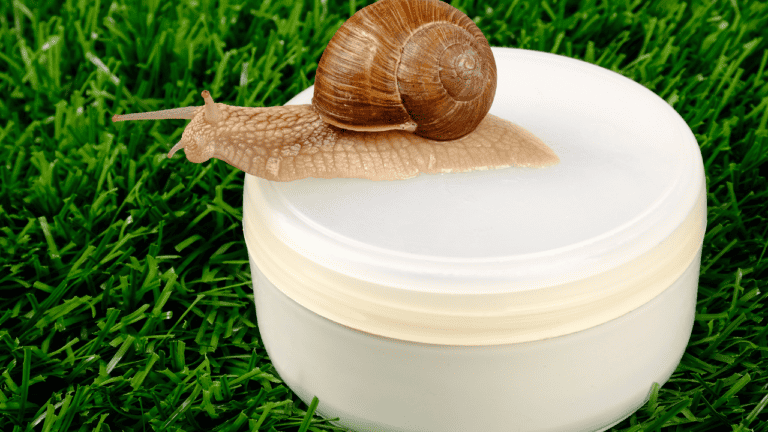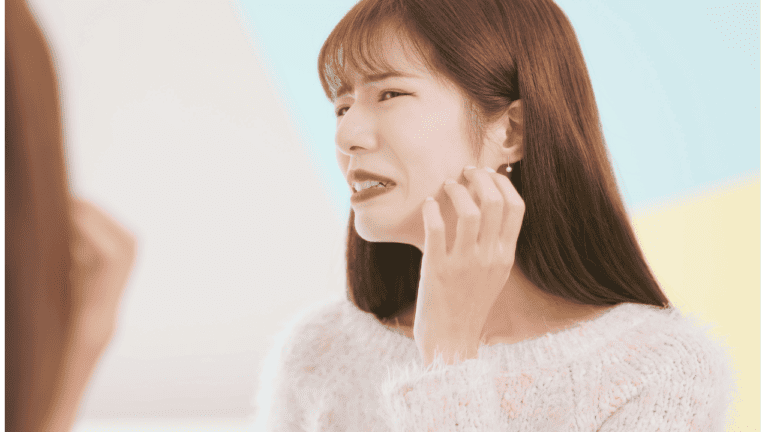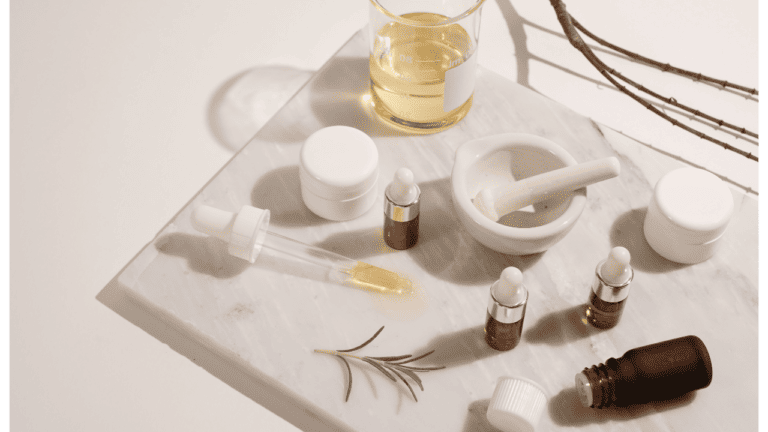Forehead acne is a common yet frustrating skin condition that affects people of all ages. Often, it develops due to a combination of factors such as hormone imbalances, excessive oil production, and clogged pores. Eliminating constant forehead acne can significantly improve one’s self-confidence and overall skin health. With the right approach and the proper treatments, it’s possible for anyone to attain clearer skin and prevent the constant appearance of forehead acne.
Understanding the causes of forehead acne and taking appropriate preventive measures are crucial for keeping this skin condition at bay. By using the right skincare products, maintaining a consistent regimen, and seeking expert advice when required, you can manage forehead acne effectively. Additionally, familiarizing yourself with the common types of forehead acne and finding the most suitable treatments for your specific skin type can lead to long-term results and a healthier complexion.
Key Takeaways
- Identifying the causes of forehead acne helps with prevention and appropriate treatment.
- Proper skin care and regimen play a crucial role in managing constant forehead acne.
- Seek expert advice and consider dermatological treatments for resistant cases.
Understanding the Causes of Forehead Acne
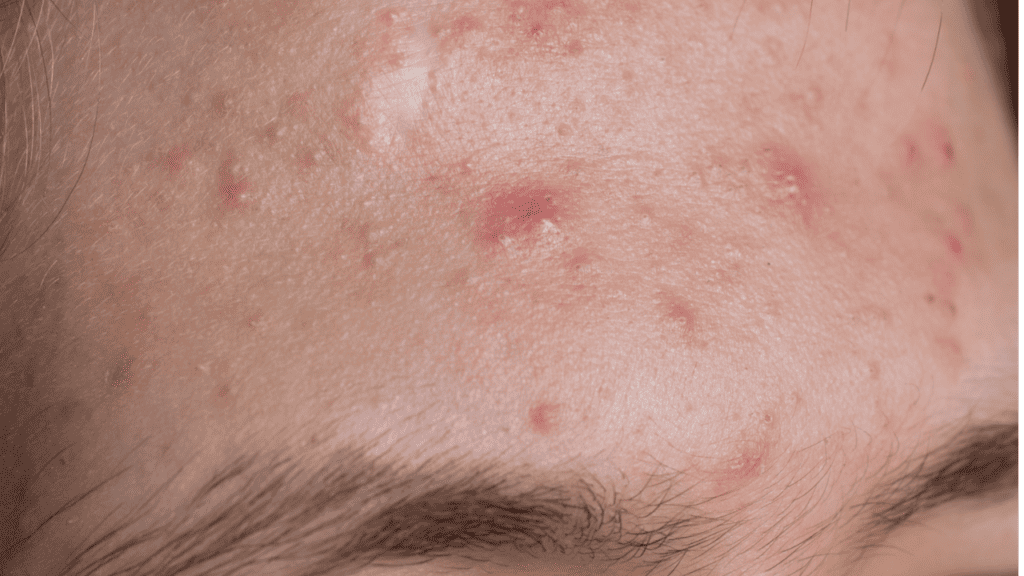
Role of Sebum and Dead Skin Cells
Your skin naturally produces an oil called sebum, which keeps your skin moisturized and supple. However, when your skin produces too much sebum, it can mix with dead skin cells and form a plug inside your hair follicles. This clogged pore can lead to the formation of forehead acne. Regularly cleansing your skin and gently exfoliating can help to remove excess sebum and dead skin cells, reducing the chances of acne formation.
Impact of Bacteria and Infection
Acne can also be caused by a buildup of bacteria on your skin. When the bacteria, known as Cutibacterium acnes, get trapped inside clogged pores, it can multiply and cause inflammation, leading to the formation of pimples. To minimize the risk of bacterial infection, it’s essential to maintain a consistent skincare routine that includes cleansing your skin and using acne-fighting ingredients such as benzoyl peroxide or salicylic acid to kill bacteria and unclog pores.
The Effect of Hormones
Hormonal fluctuations can be a significant contributor to forehead acne, especially during puberty or menstrual cycles. Androgens, male hormones present in both men and women, stimulate the production of sebum, which can lead to clogged pores and acne. If hormonal imbalances are causing your forehead acne, you may want to talk to your healthcare provider about potential treatments or medications to help regulate hormone levels.
Influence of Stress and Anxiety
Stress and anxiety can also play a role in causing forehead acne. When you’re under stress, your body produces cortisol, a hormone that can increase inflammation and sebum production, both of which can contribute to acne formation. To help manage stress, consider incorporating relaxation techniques like meditation, yoga, or exercise into your daily routine. Reducing stress levels might not only improve your overall well-being but also help in managing your acne.
Types of Forehead Acne

Pimples
Pimples are a common type of acne that can appear on your forehead. They form when your skin’s oil glands get clogged, leading to inflammation and redness. You might notice small, raised bumps with a white or yellow center. It’s important not to pick or squeeze pimples, as this can lead to scarring or infection. Instead, try using over-the-counter acne treatments containing benzoyl peroxide or salicylic acid to help reduce inflammation and clear the blocked pore.
Whiteheads and Blackheads
Whiteheads and blackheads are also common types of forehead acne. They occur when dead skin cells and oil clog your pores. The difference between the two is that whiteheads have a closed surface, giving them a white appearance, while blackheads are open, allowing the trapped material to oxidize and turn black. Incorporating a gentle exfoliating cleanser into your skincare routine can help prevent the buildup of dead skin cells and reduce the occurrence of whiteheads and blackheads.
Cysts and Boils
Cysts and boils are more severe forms of acne that can develop on your forehead. Cysts form deep within the skin when a pore becomes clogged, causing a painful, swollen bump. Boils, on the other hand, are caused by a bacterial infection and can be filled with pus. Both cysts and boils can be quite painful and may require medical attention. For these types of acne, it’s important to consult with a dermatologist to discuss the appropriate treatment options and avoid potential scarring.
Remember to maintain a consistent skincare routine, stay hydrated, and try not to touch your face to help prevent these types of forehead acne. With patience and care, you can work towards clearer skin and say goodbye to constant forehead acne.
Prevention Strategies
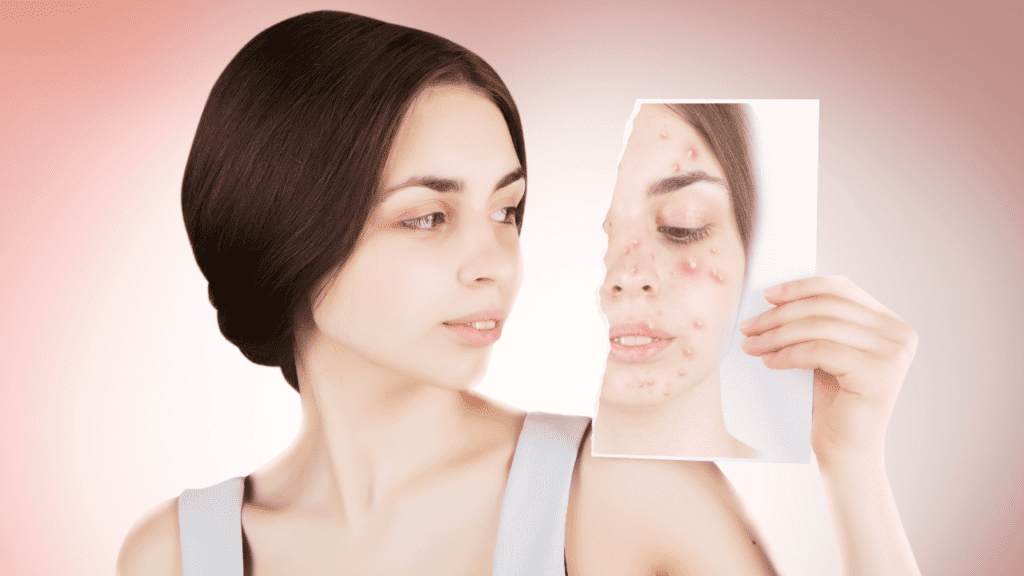
Importance of Good Hygiene
Practicing good hygiene plays a crucial role in preventing constant forehead acne. Make sure to cleanse your face at least twice a day, especially after sweating. Use gentle cleansers and avoid scrubbing your face too harshly, as this can irritate your skin and exacerbate acne. Remember to wash your hands before touching your face to avoid transferring excess oil, dirt, and bacteria that can lead to breakouts.
Choosing the Right Hair Products
Your hair products may be contributing to your forehead acne. Be selective when choosing shampoos, conditioners, and styling products, looking for options that are non-comedogenic and specifically designed for acne-prone skin. If you wear hats or headbands, make sure they’re clean and avoid wearing them for long periods, as they can trap sweat and bacteria on your forehead.
Maintaining a Balanced Diet
A balanced diet plays a significant role in keeping your skin healthy. Consuming foods rich in antioxidants, vitamins, and minerals can help reduce inflammation associated with acne. Some tips for maintaining a balanced diet include:
- Incorporating whole grains, lean proteins, and healthy fats
- Avoiding processed foods and sugary drinks
- Drinking plenty of water to stay hydrated and flush out toxins
Maintaining a Healthy Lifestyle and Sleep
Adopting a healthy lifestyle can contribute to better overall skin health. Regular exercise may help regulate hormones and reduce stress, which can be factors in acne development. Make sure you shower or cleanse your face after working out to remove sweat related bacteria. Additionally, getting enough sleep can help your body and skin repair and rejuvenate itself. Aim for 7-9 hours of sleep per night to ensure your skin has time to recover from daily stressors.
Incorporating these prevention strategies into your daily routine can help you fight against persistent forehead acne. Stay consistent and remember it takes time for your skin to adjust and improve.
Importance of Skin Care
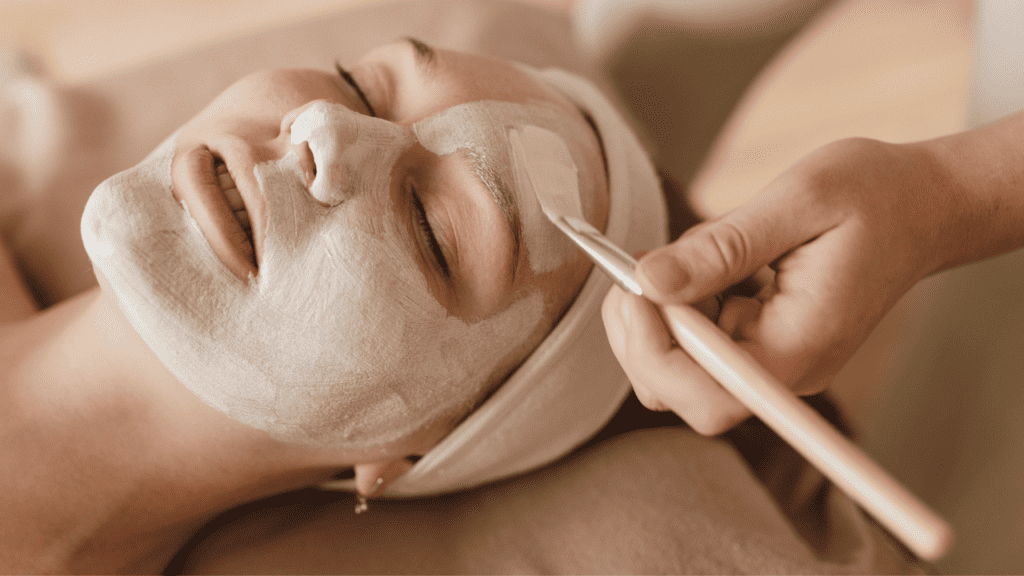
Taking care of your skin is crucial in preventing and treating constant forehead acne. In this section, we will discuss the importance of exfoliation, selecting the right moisturizer, and understanding noncomedogenic products. By following these recommendations, you can improve your skin health and reduce acne breakouts.
The Role of Exfoliation
Exfoliation refers to the process of removing dead skin cells from the surface of your skin. Regular exfoliation can help unclog pores and allow your skin to breathe, which may reduce the frequency of acne breakouts. It’s essential to find a gentle exfoliator and avoid over-exfoliating, as excessive scrubbing can cause irritation and inflammation, making acne worse. Aim to exfoliate your skin 1-2 times per week, and always follow exfoliation with a moisturizer to keep your skin hydrated.
Selecting the Right Moisturizer
A good moisturizer is crucial for maintaining your skin’s hydration and overall health. When selecting a moisturizer, consider your skin type (such as oily, dry, or combination) and opt for one that’s specifically formulated for your needs. Look for ingredients like hyaluronic acid, glycerin, and ceramides, which can help to retain moisture in your skin. Avoid products that contain heavy, pore-clogging ingredients like petrolatum and lanolin – these can contribute to acne breakouts.
Understanding Noncomedogenic Products
Noncomedogenic products are formulated to avoid clogging pores and contributing to the development of acne. It’s essential to choose noncomedogenic skincare products, especially for acne-prone skin. These products are less likely to cause breakouts and will help keep your pores clear, reducing the likelihood of constant forehead acne. Always check product labels for the term “noncomedogenic” or consult with a dermatologist or skincare professional for product recommendations suitable for your skin type.
Common Treatments for Forehead Acne
Home Remedies
Forehead acne can be frustrating, but you have several treatment options at your disposal. One way to tackle this issue is by using home remedies. These natural solutions can often provide relief and promote healing of your acne-prone skin.
Tea tree oil is known for its antibacterial and anti-inflammatory properties, making it an effective natural remedy for acne. You can dilute a few drops of tea tree oil with a carrier oil and apply it gently to your forehead once or twice a day.
Aloe vera has soothing and moisturizing properties that can help reduce redness and irritation caused by acne. You can apply aloe vera gel directly to your forehead or mix it with other natural ingredients for added benefits.
Green tea extract is rich in antioxidants, which can help fight inflammation and bacteria associated with acne. Steep a green tea bag in hot water, let it cool, and then apply it to your forehead with a cotton ball.
In addition to home remedies, there are over-the-counter medications you can try for treating your forehead acne. Common acne-fighting ingredients include benzoyl peroxide, salicylic acid, and azelaic acid. These can be found in various cleansers, spot treatments, and creams.
However, if your acne is persistent or severe, it’s time to consider prescription medications. Your doctor may prescribe retinoids, such as adapalene or tretinoin, which work by unclogging pores and preventing new breakouts. Oral antibiotics may also be prescribed to reduce inflammation and combat bacteria.
For women, birth control pills or anti-androgen agents can help regulate hormones, which may in turn reduce acne breakouts on your forehead. Always consult with your doctor before starting any new medication.
Remember, finding the right treatment for your forehead acne may require some trial and error. Be patient, and don’t be afraid to explore different options. With time and consistency, you’ll likely find the solution that works best for your skin.
Expert Dermatological Treatments
There are a few expert treatments that dermatologists recommend for eliminating constant forehead acne. These treatments include chemical peels and laser treatments, as well as light therapy. Let’s discuss each of them in detail.
Chemical Peels and Laser Treatment
Chemical peels involve using a chemical solution to exfoliate and remove the outer layer of your skin, promoting new skin growth. This treatment can be helpful for treating acne, as it unclogs pores and reduces inflammation. It’s essential to consult with a dermatologist before undergoing a chemical peel, as they can determine the most suitable type and strength of peel for your skin.
Laser treatment, on the other hand, is a non-invasive procedure that targets the deeper layers of your skin. It works by using light energy to reduce inflammation and bacteria responsible for acne breakouts. Some common laser treatments used for acne include:
- Pulsed dye laser (PDL)
- Infrared laser (IR)
- Fractional laser
When considering either a chemical peel or laser treatment, it’s crucial to engage the expertise of a dermatologist who can provide personalized advice and care.
Light Therapy
An alternative expert dermatological treatment for acne is light therapy. This method uses specific light wavelengths to target acne-causing bacteria and reduce inflammation. Two common types of light therapy are blue light and red light therapy.
Blue light therapy penetrates your skin and destroys acne-causing bacteria, preventing further breakouts. It’s gentle on your skin and can even improve the overall skin texture.
Red light therapy works to reduce inflammation and promote the healing process for existing acne breakouts. It can be especially helpful for calming redness and swelling associated with acne.
It’s important to mention that light therapy sessions should be conducted under the supervision of a dermatologist to ensure the treatment’s safe, effective, and tailored to your specific needs.
Remember to discuss your options with a dermatologist and follow their recommendations to enjoy the best results when it comes to eliminating constant forehead acne.
Conclusion
Taking care of your skin is essential in eliminating constant forehead acne. By understanding the factors contributing to breakouts, such as skin cells, oil production, and clogged pores, you can effectively manage and prevent acne.
Remember to gently cleanse your skin, avoiding harsh scrubbing to prevent irritating your sebaceous glands. For those with oily skin, using oil-free cosmetic products can help minimize excess oil on the forehead. On the other hand, if you have dry skin, ensure you moisturize properly to maintain a healthy skin barrier.
Eating a well-balanced diet and staying hydrated will also support your skin’s overall health. If you notice a correlation between your periods and breakouts, be extra cautious during this time by diligently following your skincare routine.
Consider over-the-counter treatments containing zinc, sulfur, or resorcinol for mild acne. For more severe cases, consult a dermatologist to discuss the possibility of using oral medications like spironolactone or topical treatments containing vitamin A.
Remember, acne is a common issue faced by many during puberty or as a result of fluctuating hormones. It’s important to approach acne management with patience and consistency. Stick to your skincare routine even when you don’t see immediate results as it may take time for your skin to adapt and improve.
Lastly, resist the urge to pick at or pop your pimples, as this may lead to scarring or dark spots. Treat your skin gently and consider seeking professional help if you’re dealing with persistent or inflammatory acne that doesn’t respond well to at-home treatments.
By following these tips and being kind to your skin, you can effectively reduce constant forehead acne and enjoy clearer, healthier skin. Remember, everyone’s skin is different, so don’t be discouraged if it takes time to find the approach that works best for you.
